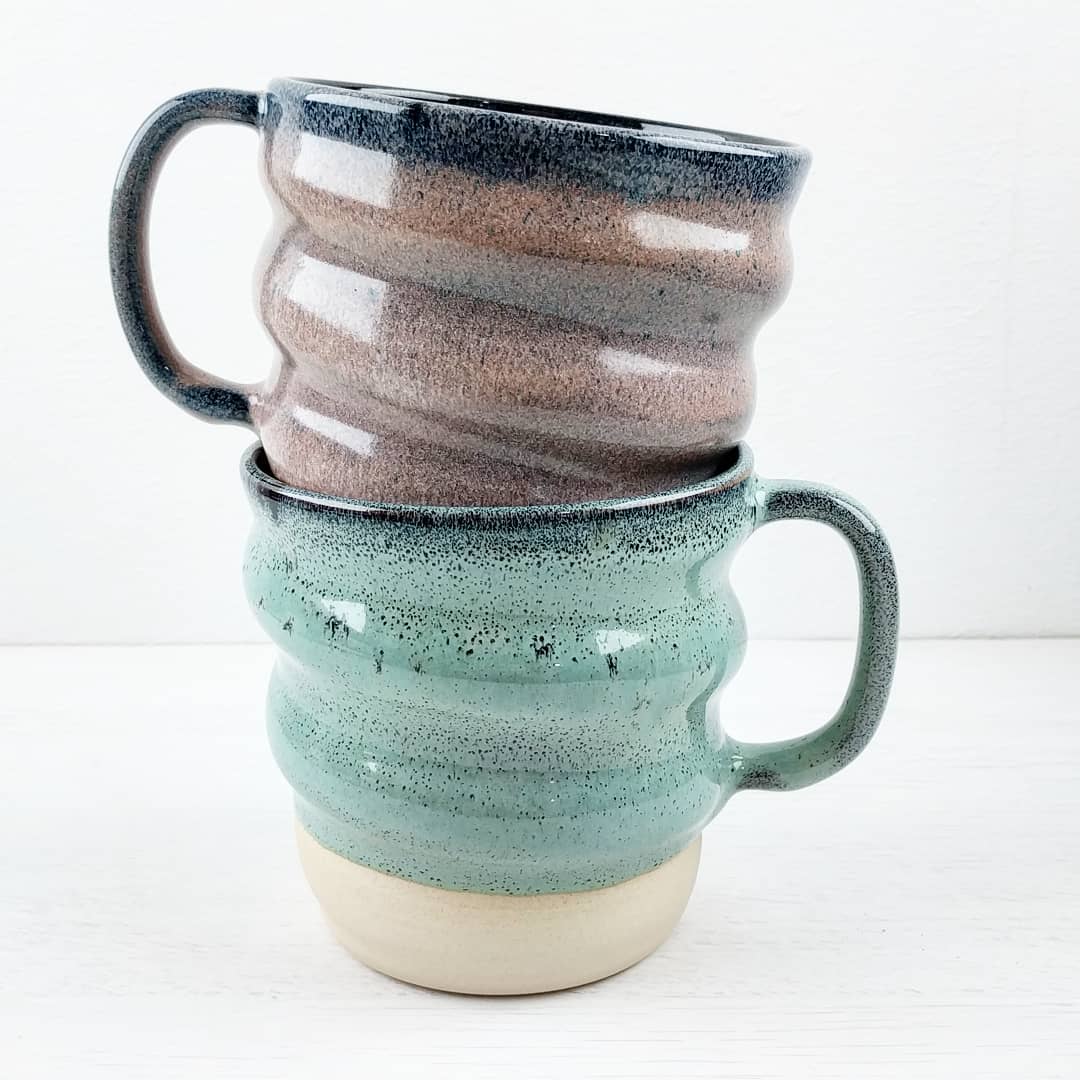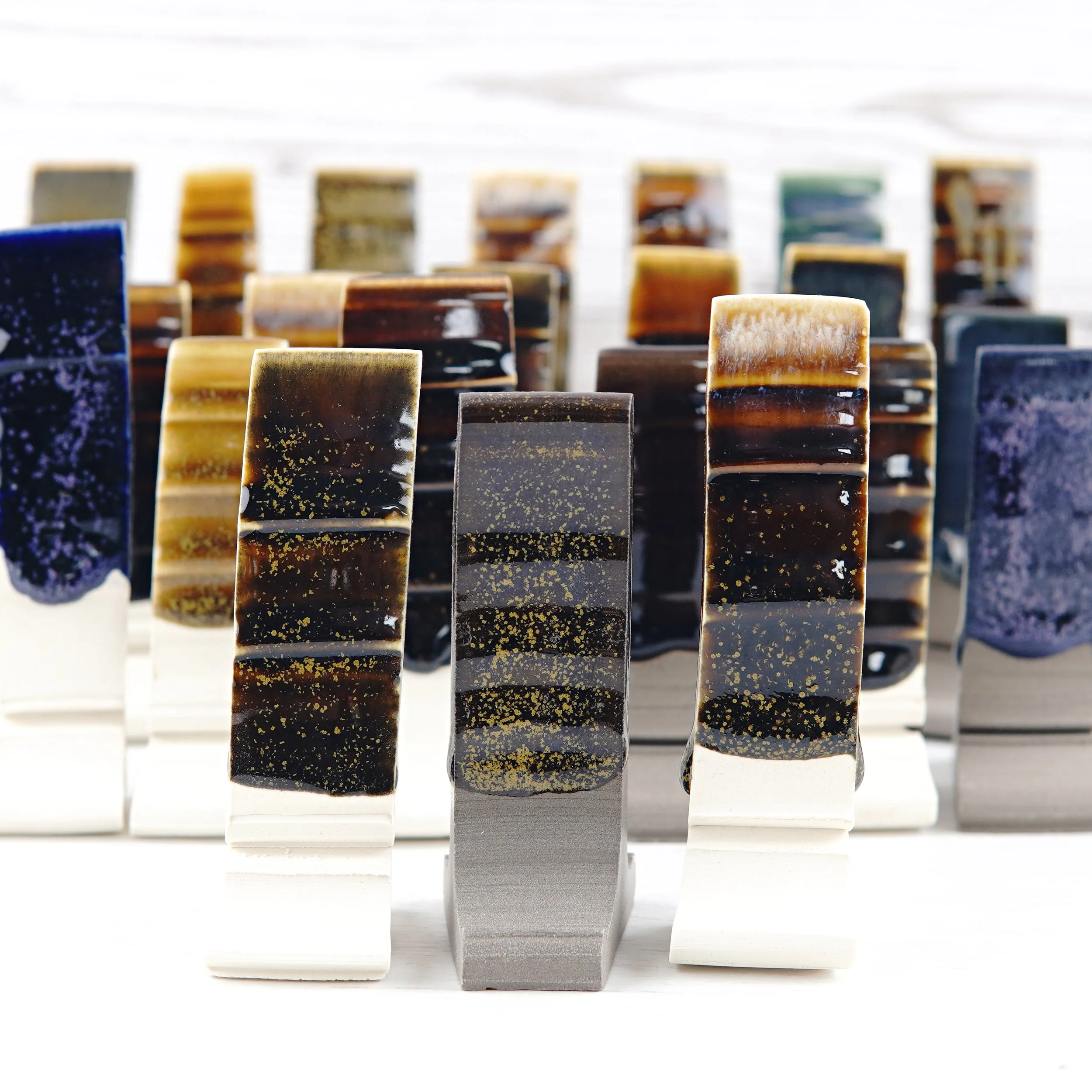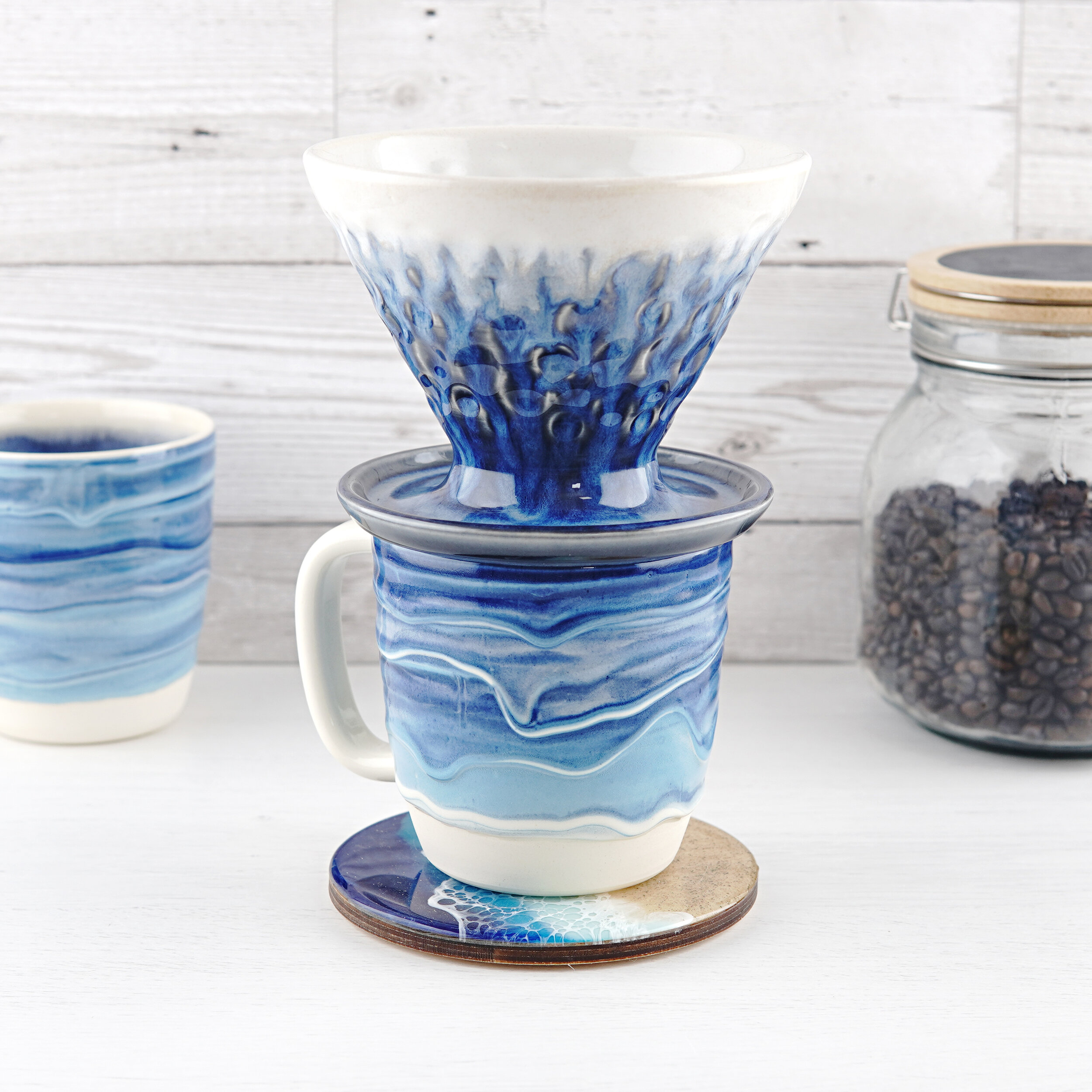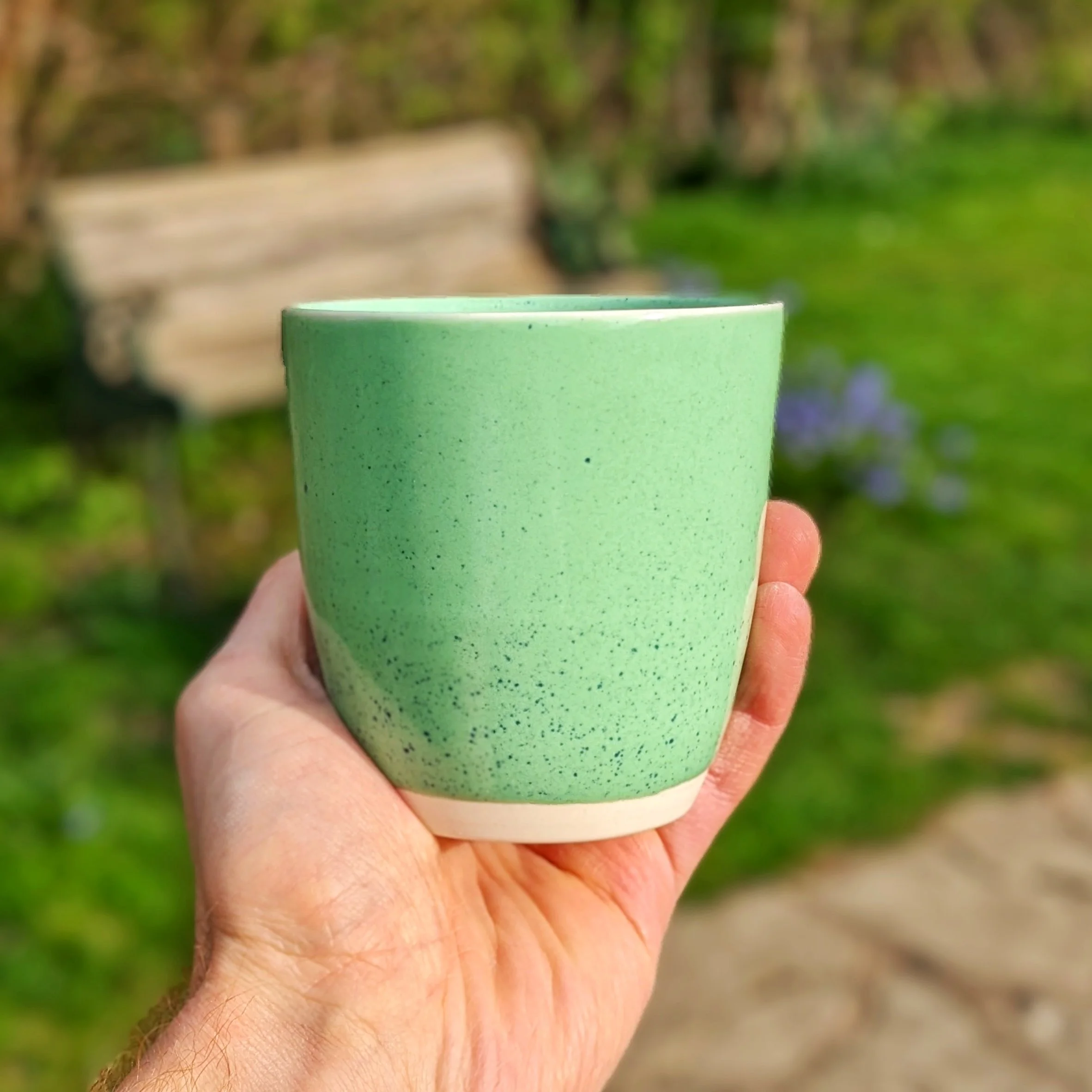The CO2 Cost of Pottery
What is CO2?
Carbon Dioxide is the waste product of combustion. As most of our energy ultimately comes from burning carbon in one form or another, pretty much everything we do will produce some CO2. This is a problem as it’s a greenhouse gas and the cumulative effect on the climate is becoming increasingly apparent.
I wanted to know roughly how much CO2 each of my pieces would be responsible for, so I tried to come up with a sensible ballpark figure.
3 Ways Of Estimating
I went looking online to see if anyone else had done this first and didn’t find anything that exactly answered the question. I did find two interesting results though:
Tile Factory
There was a study done on a tile factory to try and estimate the total environmental effect of the process. This is a fascinating read, as they really go in depth into the process and costs of tile production (a lot of which is applicable to ceramics more generally).
They found that the total CO2 cost of tile production (as I understand the results at least) is 3730kg CO2 for 1000kg of finished tiles. If this was translated directly to mugs that would give a value of around 1kg CO2 per mug.
There are obviously quite a few differences between a medium sized tile factory and a tiny pottery studio, but some processes like the material sourcing costs (mining and refining) would be outsourced and likely quite similar.
Paper vs Ceramic Cups
This was another really interesting source. They were looking into the comparison between different kinds of single use paper cups and reusable ceramic and metal alternatives. The research was instigated by the paper cup manufacturer, so I don’t believe they’re being any more generous than they have to with the CO2 numbers for the alternative options.
They put a value of around 750g CO2 for the production of the ceramic cup.
They also put the breakeven point for the CO2 cost of making and reusing a mug at 350 uses with an efficient dishwasher and found that single use paper cups would always be better (in terms of CO2 at least) than an inefficient dishwasher.
Back Of The Envelope
I used a far less precise way of arriving at a number, but I feel this does account for any additional costs when dealing with small scale production.
My basic premise is that the prices my ceramic supplier charges me for each material to be delivered to my door must include the labour and fuel cost for every single stage of the manufacturing and shipping. That means if a product has been produced elsewhere and shipped to the UK, the price would have to increase to reflect the fuel consumption. We have a reasonable idea of the material production cost from the Tile Factory paper, so any big difference in cost is likely to be from the additional shipping.
This means I can work out the financial cost of a mug and it will give some idea of the carbon cost, as the majority of the difference in material cost will be tied to energy cost and that will be primarily from fossil fuels.
The clay and glaze for a medium mug would be £0.33, which would buy around 0.25L of petrol at current UK prices and equates to around 0.58kg of CO2.
Obviously, that isn’t what the supplier actually does with the money you pay them for your materials, but the price you pay must at least cover the fuel cost of every stage of the process. So hopefully that’s a reasonable upper limit at least.
For firing, I can actually get far more accurate numbers. This is because I can get energy usage number for firing my kiln and know what the typical CO2 cost per kWh is in the UK.
For both my kilns, it works out at a little over 1kWh per mug, so a glaze firing with 30 mugs would use 30-35kWh. Bisque firings would be around half that as they’re lower temperature and packed more densely.
The UK produces energy at ~0.25kg per kWh, so it would be around 0.35-0.4kg CO2 for the firings.
This puts the total for materials and firing at around 1kg CO2.
I also have numbers from Potterycraft about the gas usage in their Laser gas kilns and surprisingly there isn’t actually much difference in CO2 when firing in reduction with gas. The numbers I was given was that they expect a cone 9 firing in their PG8 (8 cuft, ~230L) to use a 10kg bottle of propane. 10kg propane would produce 30kg CO2. That’s pretty comparable to the numbers I get from my Skutt electric kiln (approximately 4x the capacity and 4x the CO2), but I’ve never loaded a large frontloading kiln so I don’t know how many mugs that would actually equate to.
In Context
If making a mug does produce around 1-2kg CO2, what does that even mean?
To be totally honest, I don’t know. I know it’s not a huge amount in comparison to some foods (beef can be 30+kg CO2 per kilo of meat). The paper cup report put the CO2 cost of a latte at around 0.23kg (so around a quarter of the number for the mug) but a large portion of that is the cows milk.
From that perspective it doesn’t seem like much at all
I’ve seen estimates from 4-30 tons (4000-30000kg) CO2 as an average per person per year in the UK/US, but it seems like that really depends how you allocate the cost. For example, if I make 1000 mugs in a year but keep none of them, does that get added to my total or to my customers? If a mug is produced for IKEA in a factory in China and sold in the UK, who is responsible for it?
Going one step further, if my mugs produce slightly more CO2 than a mass produced IKEA mug, but are looked after better by my customers and therefore last longer, do you look at the higher cost of the mug or the reduction in CO2 over its lifetime?
I think a lot of the time, the numbers that get included or excluded from a calculation are selected to make a certain point, so it’s difficult to get a true sense of the context. The main thing is that making pottery doesn’t seem to be disproportionally damaging to the environment (at least in terms of CO2).
Other Effects Of Pottery
I’ve only talked about CO2 here, but there are other costs associated to making pottery. There are some materials, usually those also needed for higher tech applications (like lithium and cobalt), that have huge additional costs for the regions in which they’re mined and processed. In the case of lithium, it’s pollution and water consumption that causes local harm, and in the case of cobalt it’s child labour in unsafe working conditions.
There are materials we use that are toxic to animals and are especially harmful to aquatic life. These should come with a warning on the containers, so you’ll know which these are (zinc, for example). These need to be disposed of safely to avoid local damage to ecosystems.
There is single use plastic around a lot of the materials we buy. Some can be recycled, but often those that can aren’t (and it’s not because of our actions). We can also use plastic in our packaging when shipping pieces out.
Summary
Based on these calculations, I estimate that it’s around 1-2kg CO2 for a medium mug, or 4-8kg CO2 per kilo of finished work.
I think we have a responsibility to try and keep that number as low as we realistically can, while also minimising the other harms our lifestyle can cause.
For me, the main thing is to try to waste as little as possible of the raw materials and the energy that goes into finished pieces. So I recycle any clay I can before it’s bisque fired, I rinse anything with glaze into a specific glaze reclaim bucket and I try to load the kiln as efficiently as possible.
I do think it’s also worth bearing in mind that one of the most successful ways that industries have found to deflect responsibility for their actions is to get us to blame ourselves. The Jaywalking laws in the US were brought about by the car companies and the anti littering laws were going to have a bigger impact on the packaging industry until blame was focused on the public instead. We should hold companies responsible as well as ourselves and know that they spend a considerable amount of money to make us feel that it’s our fault and/or that it’s hopeless and nothing can be done.
If you like this sort of content and want to support the creation of more, I now have a Patreon specifically for it or a page on my website if you just want to make a single donation.











